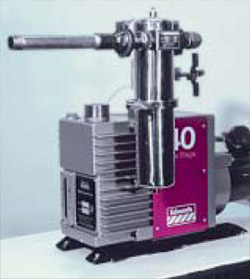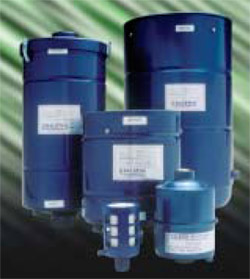Vacuum Pump Filter Review
Vacuum pump filters (intake & exhaust) are designed to prevent dust and particulate matter from entering or exiting your vacuum pump and contaminating the vacuum system components.
Vacuum exhaust filters are often used on oil sealed rotary vane type vacuum pumps. The main reason to use an exhaust filter is to eliminate or minimize oil mist from existing the pump that can often be a byproduct of the vacuum pumps operation. Often a vacuum pump exhaust filter is referred to as a "oil mist eliminator".
Oil mist or vapor is often generated by vacuum pumps for a variety of reasons. Typically, this is caused by operating the vacuum pump at very "low" pressures. Operating pressures above 1 Torr or 1000 micron can cause oil mist to be generated by the vacuum pump action. The most common reason oil mist is created is by pumping against an "open" or leaky system. The pump then has very high gas flows and given the complex paths that the vacuum gas passes through the process will atomize oil molecules.
There are two basic types of vacuum pump filters; exhaust and intake. The first is a standard exhaust filter; generally coalescing filter, that will trap the oil mist and store or keep the oil in the pump. Coalescing means that the oil drains back into the pump after it has been condensed on the insides of the filter element or associated housing. The intake filters are generally a high density, low porous type filter that will remove particulates from the intake port of the vacuum pump.
Often a multi-stage filtration system is required. These filter system might consist of two or more stages or layered filters to progressively remove particulate and oil mist. The first filter could be an oil mist eliminator, The second stage of filtering, may consist of a disposable charcoal trap to remove volatile organic compounds from the vacuum.
 Vacuum Inlet Filter Application |
 Vacuum Exhaust Filters |